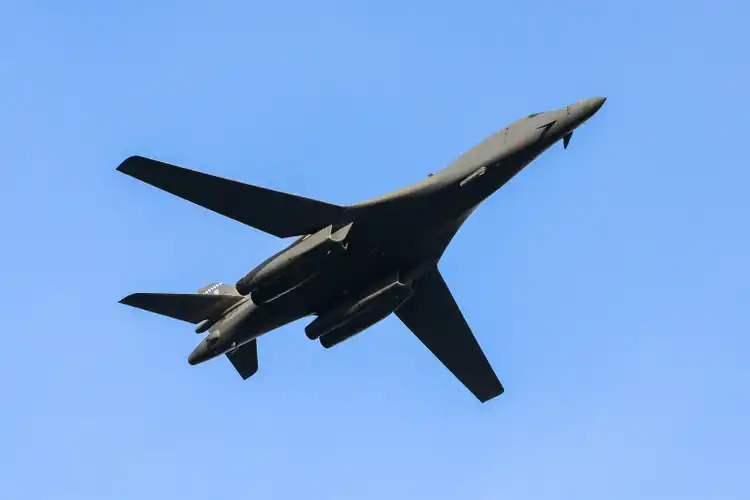OGDEN, Utah – The U.S. Defense Logistics Agency’s aviation office in Ogden, Utah, has awarded Northrop Grumman Corp. a substantial $121.5 million contract to supply AN/APQ-164 offensive radar low observable antennas for the U.S. Air Force B-1B Lancer strategic jet bomber. This development marks a significant enhancement in the military capabilities of the B-1B Lancer, a bomber originally conceptualized in the 1970s and operational since 1986.
The B-1B Lancer, which faced an uncertain future during its initial years, eventually became a mainstay of the U.S. Air Force after being reinstated by President Ronald Reagan. Designed as a supersonic low-level penetrating bomber, the B-1 is equipped for both nuclear and conventional missions. It relies on its speed and sophisticated electronic warfare systems to evade enemy defenses.
Despite the announcement in 2019 of its eventual retirement in favor of the forthcoming B-21 Raider stealth bomber, the B-1B Lancer continues to receive technological upgrades, extending its operational life and versatility. Notably, recent enhancements include the integration of the Scalable Agile Beam Radar-Global Strike (SABR-GS) – an advanced active electronically scanned array (AESA) radar system developed by Northrop Grumman.
The SABR-GS, a major leap in radar technology, provides enhanced image processing and sensor integration, crucial for situational awareness and reconnaissance missions. It represents a blend of open-architecture design, facilitating ongoing maintainability and system upgrades, and leverages technology from the radars used in F-35, F-22, and F-16 fighter jets.
This advanced radar system, larger and more sophisticated than its counterparts in smaller fighter aircraft, offers detailed targeting information and digital mapping capabilities under all weather conditions. Northrop Grumman’s development of the SABR-GS, initiated with a $21 million risk-reduction contract in 2011, has undergone extensive flight-testing, paving the way for its integration into the B-1B’s systems.
The contract signifies a crucial step in maintaining the B-1B Lancer’s relevance in modern warfare, even as it approaches the end of its service life, and underscores Northrop Grumman’s ongoing role in enhancing U.S. military technology.

